Recent Articles
Popular Makes
Body Types
2017 Cadillac Escalade vs 2016 Lincoln Navigator: Which is Best?
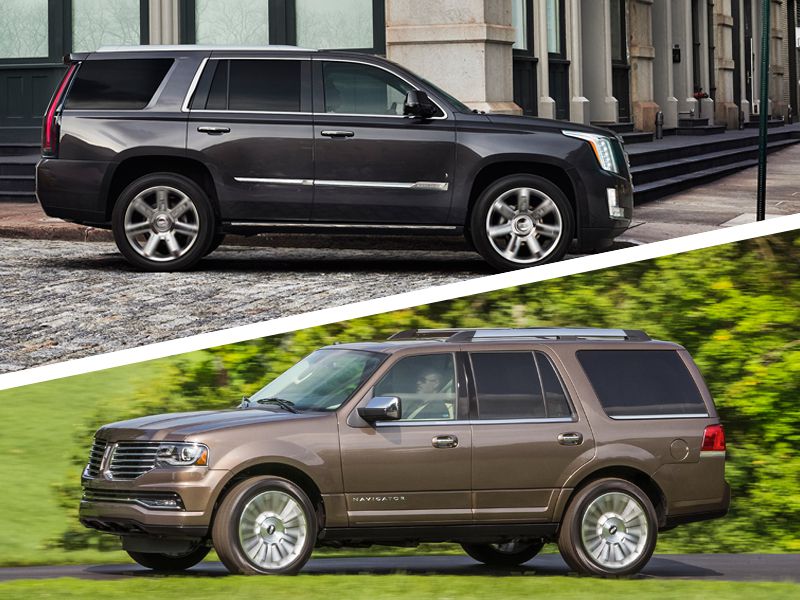
2017 Cadillac Escalade vs 2016 Lincoln Navigator ・ Photo by General Motors / Lincoln
Luxury car buyers used to debate between buying a Cadillac and buying a Lincoln. Today, if you need a plus-size SUV that will coddle you like a luxury sedan and tow like a pickup truck, your choices are the same: Cadillac Escalade or the Lincoln Navigator. But which one is best? Let’s take a closer look to figure out in which areas these two big luxury SUVs excel.
One important note: The Lincoln Navigator will be redesigned for the 2018 model year, and many of the underlying chassis features we like about the 2016 model will carry over to 2018. (There was no 2017 Navigator model.) The Cadillac Escalade was last redesigned for the 2015 model year, and we don’t expect any wholesale changes anytime soon.
Pricing and Trim Levels
The Escalade is available in four models: Base, Luxury, Premium Luxury, and Platinum, with list prices (including destination) ranging from $74,590 up to $96,390. Caddy makes an extended-length version called the ESV for $2,375 more, and 4-wheel drive adds $3,000 to the price. General Motors sells this same basic vehicle as the Chevrolet Yukon/Suburban and GMC Tahoe, and the Escalade is lavishly equipped to separate it from its blue-collar cousins. A Bose stereo and leather upholstery come standard; the Luxury model adds safety alert features; the Premium Luxury version gets automatic braking, adaptive cruise control, and a rear seat entertainment system; and the Platinum model gets an upgraded interior. There aren’t many options, but if you ask for all of them, the Escalade lists for $101,210. In comparison, the Navigator seems like a bargain. It’s available in two trim levels, Select and Reserve, priced at $64,710 and $72,775, respectively. The extended-length version, called Navigator L, costs $2,390 more, and 4-wheel drive adds $3,575. Like the Escalade, the Navigator comes with a long list of standard equipment, including heated and cooled leather seats and a high-end THX stereo. The Reserve model doesn’t seem to add much for six grand: Bigger wheels, an adaptive suspension, two-tone paint, and leather on the dash and doors. The Navigator’s options list is longer than the Escalade’s, but a fully-loaded Navigator tops out at $80,675, twenty grand less than the Escalade.
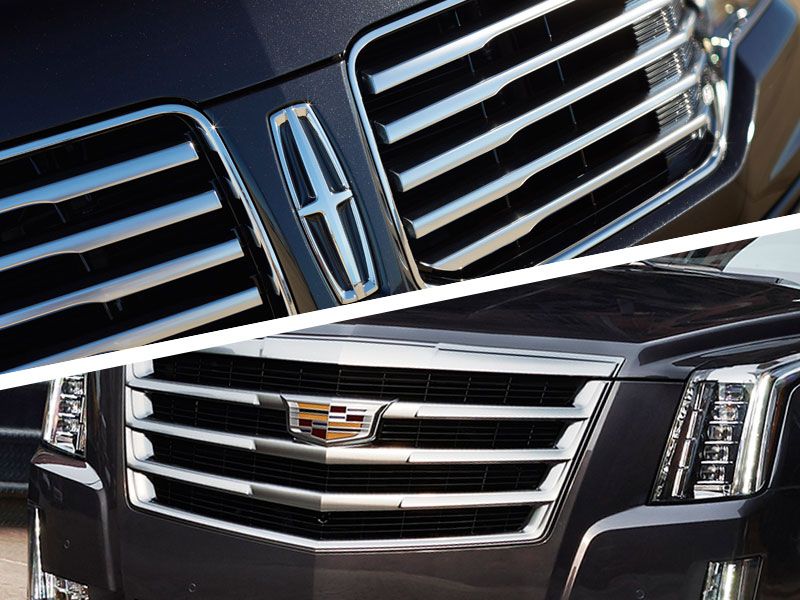
Photo by General Motors / Lincoln
Options
Cadillac offers few options; features are added as you move up to higher-priced trim levels. Contrast that with Lincoln: There isn’t much difference between the Select and Reserve models, but the Navigator offers several options for both trims, including a moonroof, power running boards, a rear-seat entertainment system, upgraded wheels, and a choice between a three-place bench and individual captain’s chairs for the second-row seat.
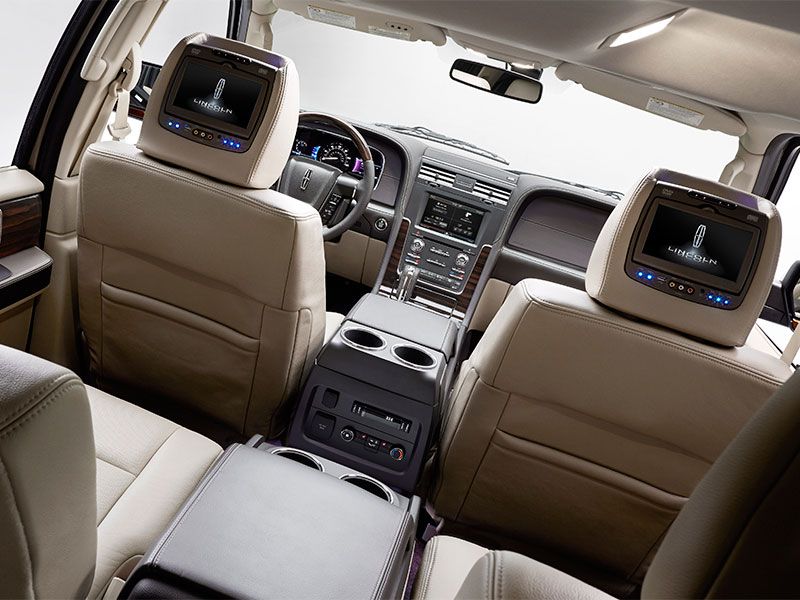
Photo by Lincoln
Powertrains and Efficiency
The Cadillac Escalade is powered by a 6.2-liter V8 that produces 420 hp and 460 lb-ft of torque with an 8-speed automatic transmission. This is the same engine GM uses in its pickup trucks; it’s a traditional design (cam-in-block, two valves per cylinder) engineered for excellent pulling power and longevity. The Lincoln, on the other hand, uses a 3.5-liter twin-turbocharged V6 that produces 380 hp and 460 lb-ft of torque. Despite the horsepower difference, the Navigator is only a tad slower to 60 mph. We’d expect the twin-turbo V6 to deliver better fuel efficiency, but the Navigator’s 6-speed automatic is at a disadvantage compared to the Cadillac’s 8-speed. In real-world driving, fuel economy should be similar—around 16 mpg. Both vehicles are offered with 4-wheel drive, but only the Cadillac has a two-speed transfer case for more serious off-roading. The Navigator’s system will work fine for inclement weather and light off-road use, but the lack of a low range puts it at a disadvantage for serious rock-crawling.
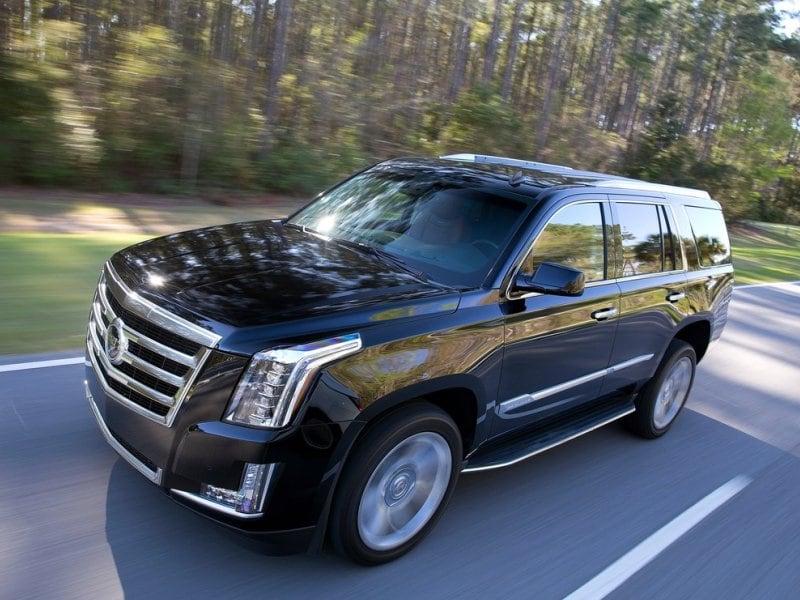
Photo by Cadillac
Stand-Out Features
It’s hard to beat the elegance of the Escalade; it’s beautifully styled and appointed, though some might not care for the fingerprint-prone touch screen. By comparison, however, the Navigator’s interior looks blocky and dated, with poor use made of the available dashboard real estate. But if you crawl underneath, the Navigator begins to look better. It uses an independent rear suspension, as opposed to the solid rear axle of the Cadillac (a design that dates back to the dawn of the automobile). The Navigator’s independent rear end improves handling, especially on bumpy roads, and makes the Navigator feel more competent and confident in emergency swerves.
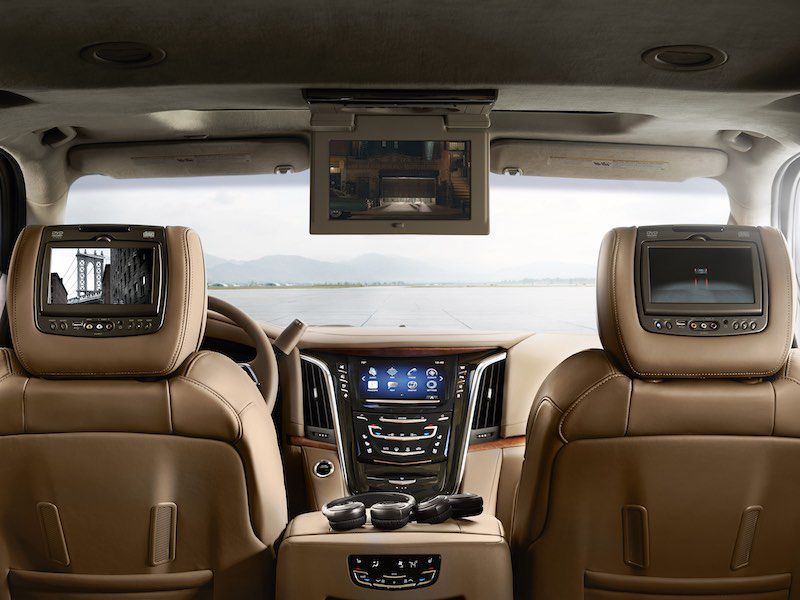
Photo by General Motors
Exterior Design
The Escalade looks large and in charge, with a big, bold grille and blocky styling that fits the brand’s angular motif. It’s an exceptionally handsome vehicle, and it attracts attention—when an Escalade rolls up, people seem to sense there is someone important inside. The Navigator is more subtle, but it’s certainly no less attractive. We rather like the split-wing grille (which, unfortunately, Lincoln will abandon in 2018), and its squared-off lines give it pleasing proportions. It’s not as modern or showy as the Cadillac, but we like its easygoing demeanor.
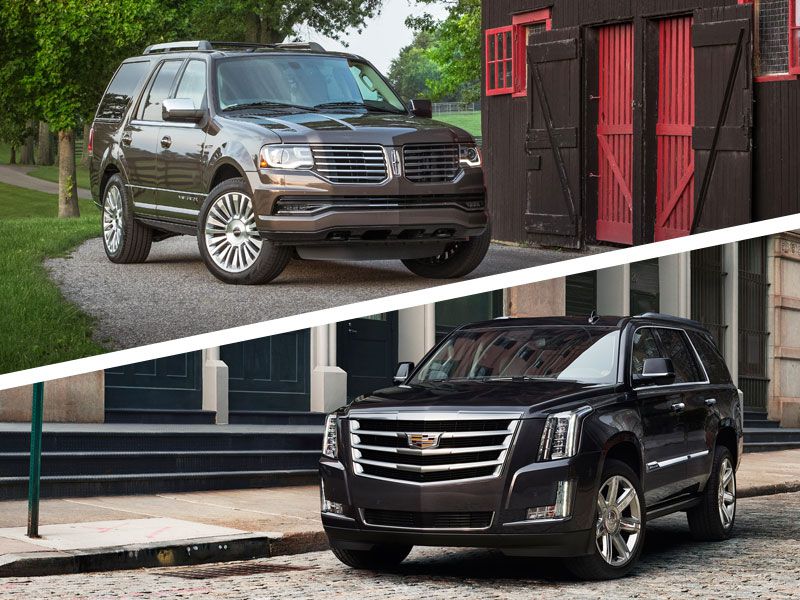
Interior Design
Interior design is a Cadillac strong point: the cabin is elegant and flamboyant, especially the Platinum models, which get a full leather-lined dashboard. That said, the Escalade isn’t as user-friendly as we’d like. The stereo touch screen has a glossy finish that highlights fingerprints, and the touch-sensitive pads used in place of buttons make it easy to “press” buttons unintentionally. Visually, the Navigator’s interior falls flat—it looks dated and a bit cobbled together; the instrument panel and stereo/climate controls that look too small for the space they are occupying. That said, we can’t complain about comfort; in that respect, the Navigator gives nothing away to the Escalade, but it’s simply not as nice to look at.
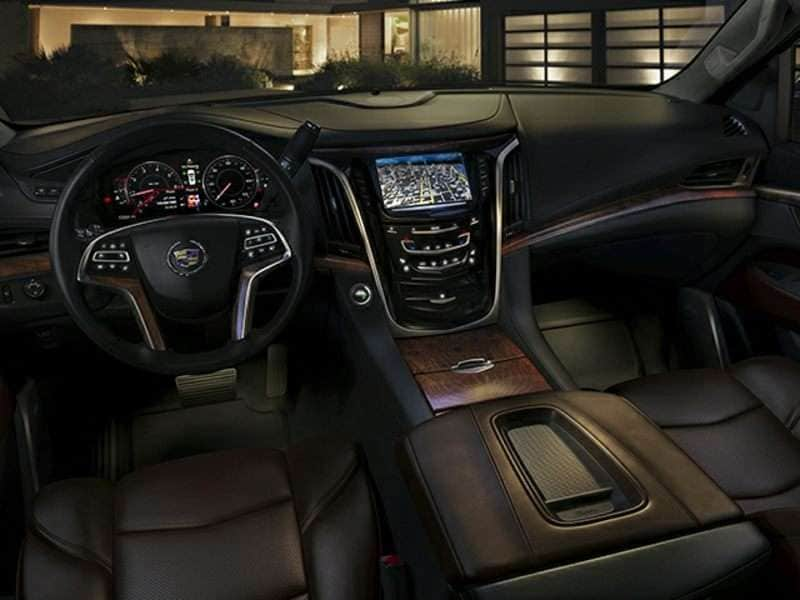
Photo by General Motors
Interior Space and Cargo Capacity
These are massive vehicles, and passenger space shouldn’t be in short supply, so we were surprised to see how tight space is in the Cadillac’s third row, owing partially to second-row seats that don’t adjust. The Navigator’s third row seat is considerably better. As mentioned earlier, both of these SUVs are available in short- and long-wheelbase versions; the latter provide extra cargo space when all three rows of seats are in use. Again, both are generous, but the Lincoln edges out the Cadillac. The standard-length Navigator has 18.1 cubic feet of storage behind the rear seats, while the Navigator L offers 42.6 cubic feet. By comparison, the two versions of the Escalade offer 15.2 and 39.3 cubic feet respectively. Fold down the third-row seats, and the numbers are 54.4/86.3 for the short/long wheelbase Navigator and 51.6/76.7 for the Escalade. In terms of towing capacity, the Lincoln also has a considerable edge. Depending on how it is equipped, the Navigator tows between 8,300 and 9,000 lbs. The Escalade tows between 7,900 and 8,300 lbs. Note that long-wheelbase versions tow less, due to their extra weight, but they provide added stability for longer trailers.
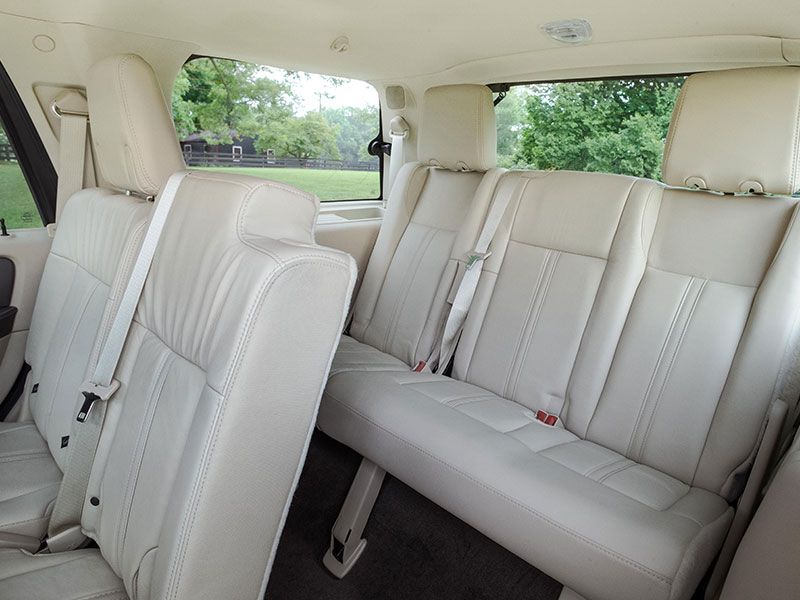
Photo by Lincoln
Safety Ratings and Technology
In terms of active safety, the Cadillac pulls ahead. It offers advanced features such as adaptive cruise control, forward collision warning with automatic braking, and lane-departure warning. These features are optional and are not offered on the base model, but the Navigator doesn’t offer them at all, a sign of its age. (We imagine they will be offered on the 2018 Navigator.) However, the Lincoln, like the Cadillac, does offer a blind spot warning system. But what happens if you actually get into a crash? Both vehicles have a full set of airbags, but the Navigator did better in government crash tests—five out of five stars, as opposed to four out of five for the Escalade. Unfortunately, the Insurance Institute for Highway Safety, which uses more realistic offset-deforming-barrier crash tests, has not tested either vehicle.
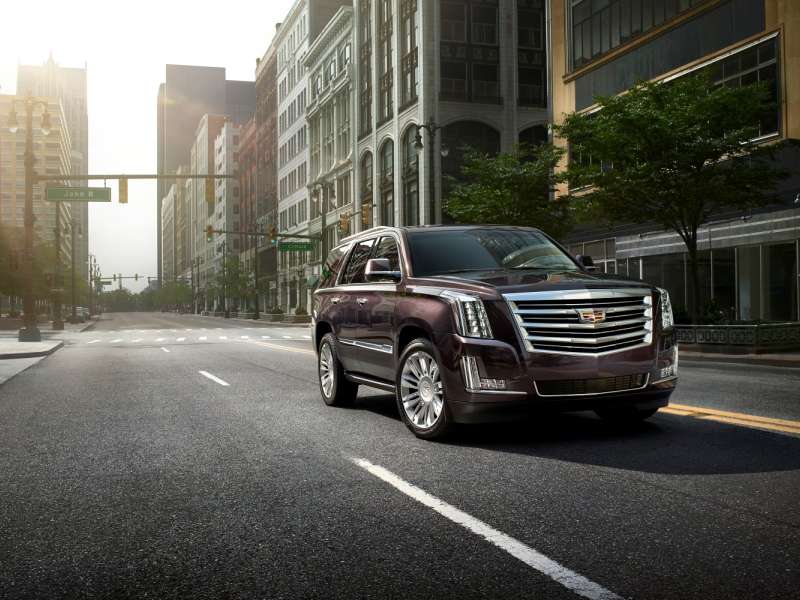
Photo by Cadillac
The Driving Experience
We expect luxury yachts like this to deliver a smooth, quiet ride, and both vehicles satisfy. But the Navigator, with its independent rear suspension, has a distinct edge. Though you’ll never mistake it for a sports car, it does feel decidedly more nimble than the Escalade, this despite the latter’s Magnetic Ride Control shock absorbers, which are designed to allow a softer ride with better handling response. Equip the Escalade with big wheels, and the ride gets harsher than we expect from a Cadillac. The Navigator’s twin-turbo V6 does a good imitation of a big V8 engine, but if you hit the gas at just the right moment, you may feel a bit of turbo lag (a hesitation in power until the turbochargers get up to speed). The Escalade’s V8 is the real thing, and power is both immediate and impressive.
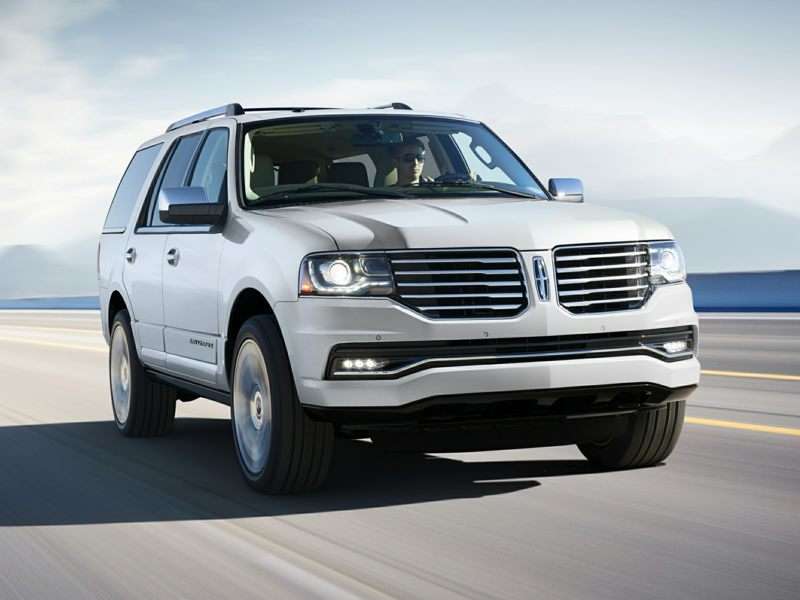
Photo by Lincoln
Which is Best?
When we began this comparison, we expected the Cadillac to be the clear winner. Both are good-looking vehicles on the outside, but the Cadillac is the more imposing of the two, and it has a more elegant interior. It also offers more up-to-date safety features. The Escalade is simply a newer design, and that shows. (When the new 2018 Navigator arrives, the Cadillac is going to have its hands full.) But despite its age, the Navigator excels in several areas—and they are important ones. The Lincoln has more cargo space and greater towing capacity, and it’s the better of the two vehicles to drive. It’s also significantly less expensive, though the Cadillac does offer more equipment to justify its higher price. If style is the most important parameter, then the Cadillac Escalade will probably make you happier. But if you need maximum capability—and that is certainly one reason people buy big SUVs like these—then the Navigator has a functional edge. Our advice is to carefully evaluate your needs, test drive both, and decide if form (Cadillac) or function (Navigator) is most important.
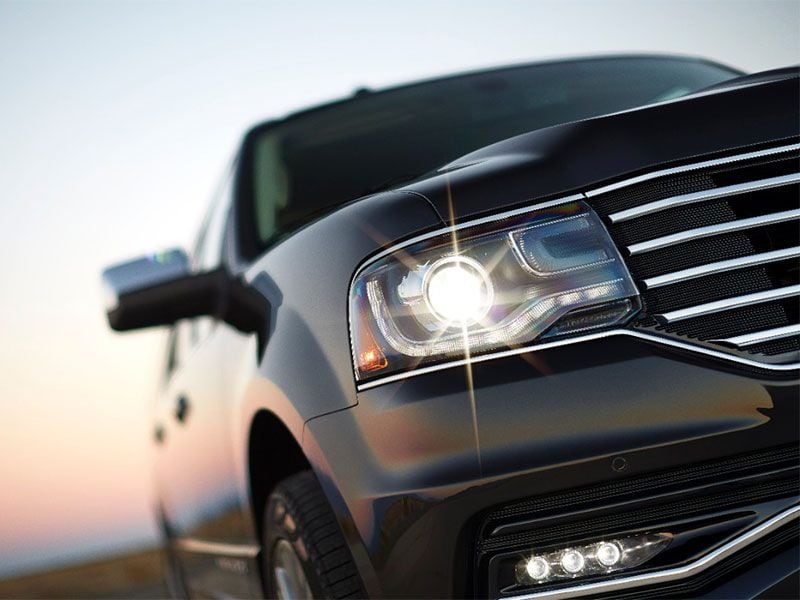
Photo by Lincoln